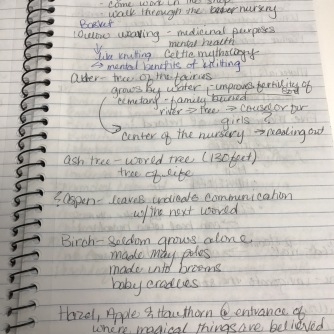Share your Invisible Work
I just started playing with an idea for a new book. It’s in such beginning stages that I have possible character names and a decent idea of a fictional location based on some real places I’ve lived. Because I like to infuse a little magic into my writing, I’m also exploring mythologies that incorporate what I think will be key parts of my story. But if you were to ask me what it’s about, I’d say Sisters. I think.
And, if this book idea gets an okay from my agent, if it stays a good idea, if it gets picked up by a publisher, and if, someday, I’m talking about this book and you ask me what inspired me to write this book, what my process was in creating the book, almost none of what I’m doing now would make the cut.
The reality is that most jobs have invisible work – that is, work that is done, that is necessary, and that is very rarely seen. When my children were younger, people could see if they were well-dressed and/or well-groomed, but they couldn’t see the nights when a bed intended for two became a bed for three or four depending on the speed of a bad dream. People who listen to me or my daughters perform music can comment on that performance, but they are oblivious to the times when three or four notes were worked over and over and over again because they were tricky. People who see a couple in love are not privy to the private conversations that took place over the course of years to find the truth that can only be discovered through courage and vulnerability and compassion.
And so it is, that any good work – really good work – is going to have varying levels of invisibility behind it. This is probably also one of the reasons that so many fledging writers think they can just write a story and then it’ll be published and sold and life will be lovely.
I think creatives of all kinds, but especially writers, need to have the courage to provide insight into what is involved in our invisible work. I’m not alone in this idea either. Austin Kleon said:
“Human beings want to know where things came from, how they were made, who made them. The stories you tell about the work you do have a huge effect on how people feel and what they understand about your work, and how people feel and what they understand about your work affects how they value it.”
How I start my stories…it’s jumbled

This is not to say that you have to give away everything. But there is a value in letting others see how your work comes together. Even more? There’s value in documenting how you put your own work together. Just as my children aren’t aware of how tall they are getting, when they put on old clothes, stand against the measuring wall, see a relative who is now not quite so tall, they learn of the growth they already did. If we keep our invisible work hidden from ourselves, we too miss out on understanding the way that we have improved and honed our craft.


One Comment
Pingback: